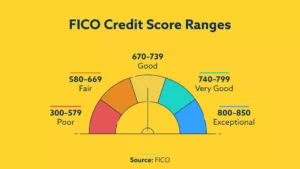 In September 2011, the U.S. Department of Education released alarming numbers for student loan default showing default numbers at their highest levels since 1997.
In September 2011, the U.S. Department of Education released alarming numbers for student loan default showing default numbers at their highest levels since 1997.
The most recent statistics are for 2009 which show 8.8% of borrowers unable to maintain repayment by the year 2010.
The 8.8% of defaulted student loans translates to roughly 320,000 borrowers of the 3.6 million borrowers whose student became due in 2009. The borrowers are primarily young adults who are now saddled with debt they are unable to pay.
The lagging job market no doubt has contributed to this alarming statistic. But what makes this number worse is that many students borrowed using parents as co-signors which means the student, as well as the parents’ credit rating is at risk.
The numbers are particularly high at for-profit universities, where the default rate jumped from 11.6% last year to 15% according to the latest numbers. At some for-profit schools 25% of 2010 students defaulted on loans and in some instances default rates went as high as 40%.
The Department of Education is considering prohibiting some for-profit universities from participating in student financial aid programs. Five schools targeted schools with particularly high default rates are:
- Tidewater Technical, Norfolk, VA
- Trend Barber College, Houston, TX
- Missouri School of Barbering & Hairstyling, St. Louis, MO
- Sebring Career School, Houston, TX
- Stanley Technical Institute, Clarksburg, WV
Public and private institutions were not unaffected by the increase in default rates. Public schools saw an increase from 6% last year to 7.2%. Private schools saw an increase in default rates from 4% to 4.6%.
Not only are young adults facing negative credit issues but also their parents, as late payments and defaults will show up on student as well as parents’ credit reports. Not to mention the debt collector calls and letters. In most cases filing bankruptcy will not relieve students or parents of student loans.
Student loan debt is very different from revolving debt such as credit cards, installment loans and even mortgage loans. Credit cards are unsecured debt and can be wiped out in bankruptcy court.
Even though mortgage loans are secured by the property, remedies such as short sales, loan modifications, deed-in-lieu of foreclosure can help borrowers avoid repayment which gives them a fresh start.
Student loan debt does not afford borrowers a fresh-start option. They don’t go away. In fact, student loans can float from collection agency to collection agency, while continuing to accrue interest, fees and collection costs.
Mark Kantrowitz, publisher of FinAid.org and Fastweb.com says “Defaulting can be completely devastating to a family's finances and sense of well being.”
The government is going to get repayment one way or another. Wages can be garnished, federal and state income tax can be withheld, even Social Security payments can be diverted.
The outlook is dismal unless students take immediate action. Below are four actions student can take to avoid default:
1. Student Loan Forgiveness. The federal government will cancel all or part of an educational loan under certain conditions: Perform volunteer work; Military Service; Teach or Practice medicine in certain types of communities; or, Meet other criteria specified by the forgiveness program.
2. Rehabilitate Defaulted Student Loans. A borrower can rehabilitate a defaulted federal student loan by complying with specified federal repayment requirements. A series of on-time, monthly payments, as determined by the lender, must be made each month for 12 consecutive months.
Within 30-days of receiving the borrower’s last on-time consecutive payment, the lender must: (1) Return the borrower to regular repayment status; (2) Make the first payment made under the 12-consecutive payment requirement the first payment under the 10-year repayment maximum; (3) Remove the default status from the borrower’s credit history at all three major credit bureaus.
3. Income Based Repayment. Income-Based Repayment (IBR) is for federal student loan borrowers in both the Direct and Guaranteed (or FFEL) loan programs, and covers most types of federal loans made to students, but not those made to parents.
Under IBR , loan payments are less than 10 percent of the borrower’s income – and even smaller for borrowers with lower income. IBR will also forgive remaining debt, if any, after 25 years of qualifying payments.
To qualify for the program, borrowers must have sufficient debt relative to income. If it takes more than 15% of whatever you earn above 150% of the poverty level to pay off your loans on a standard 10-year payment plan, you may be eligible.
4. Defer Student Loans. If you have not defaulted on your loan but pretty certain default will occur, you still have time to defer your loan. A deferment is a postponement of payment on a loan. You may qualify for a deferment if you are enrolled at least half time in an eligible postsecondary school. Taking some classes at your local junior college can qualify you for deferment.
Full time study in a graduate fellowship program or an approved disability rehabilitation program will also qualify you for deferment.
Unemployed or economic hardship can qualify you for deferment up to 3 years also. If do not qualify for deferment request forbearance. Forbearance allows you to temporarily stop making payments, temporarily make smaller payments, or extend the time for making payments.
For more information on assistance in repaying federal student loans visit: studentloans.gov to learn about repayment options.










